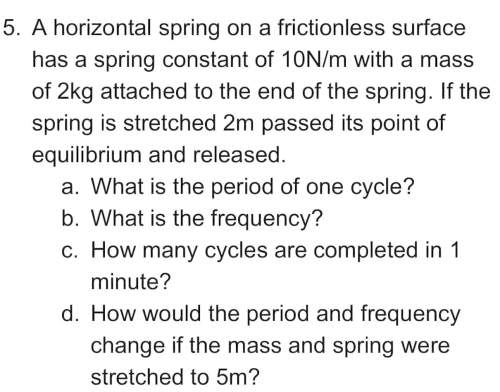
Physics, 18.10.2021 23:30 promiselee200
A 35kg child exerts a force of 100N on a box. what force does the box exert on the child?

Answers: 3


Other questions on the subject: Physics

Physics, 22.06.2019 01:40, sasalinas2001
In all trials, the magnitude of the final velocity for g1 + g2 was less than the magnitude of any initial velocity. as mass increased, what happened to the velocity? the velocity decreased. the velocity increased. the velocity of g1 + g2 could not be measured. the velocity was not affected by the mass increase.
Answers: 1

Physics, 22.06.2019 20:20, NNopeNNopeNNope
The base of a 50-meter tower is at the origin; the base of a 50-meter tree is at (0, 50, 0). the ground is flat and the z-axis points upward. the following parametric equations describe the motion of six projectiles each launched at time t = 0 in seconds. (i) r (t) = (50 + t2)k (ii) r (t) = 2t2 j + 2t2k (iii) r (t) = 50 i + 50 j + (50 − t2)k (iv) r (t) = 2t j + (50 − t2)k (v) r (t) = (50 − 2t) i + 2t j + (50 − t)k (vi) r (t) = t i + t j + tk (a) which projectile is launched from the top of the tower and goes downward? at time t = , the projectile hits the ground at point (x, y, z) = . (b) which projectile hits the top of the tree?
Answers: 2

Physics, 23.06.2019 03:00, kayla6653
Suppose the house in question 3 is located in cleveland where the annual average solar flux is 160 w/m2 . if 10 m2 of solar panels operating at 20 percent efficiency were installed on this house to collect and store solar energy in the form of hot water:
Answers: 2
You know the right answer?
A 35kg child exerts a force of 100N on a box. what force does the box exert on the child?...
Questions in other subjects:

English, 09.12.2020 01:50



English, 09.12.2020 01:50

History, 09.12.2020 01:50




Biology, 09.12.2020 01:50




